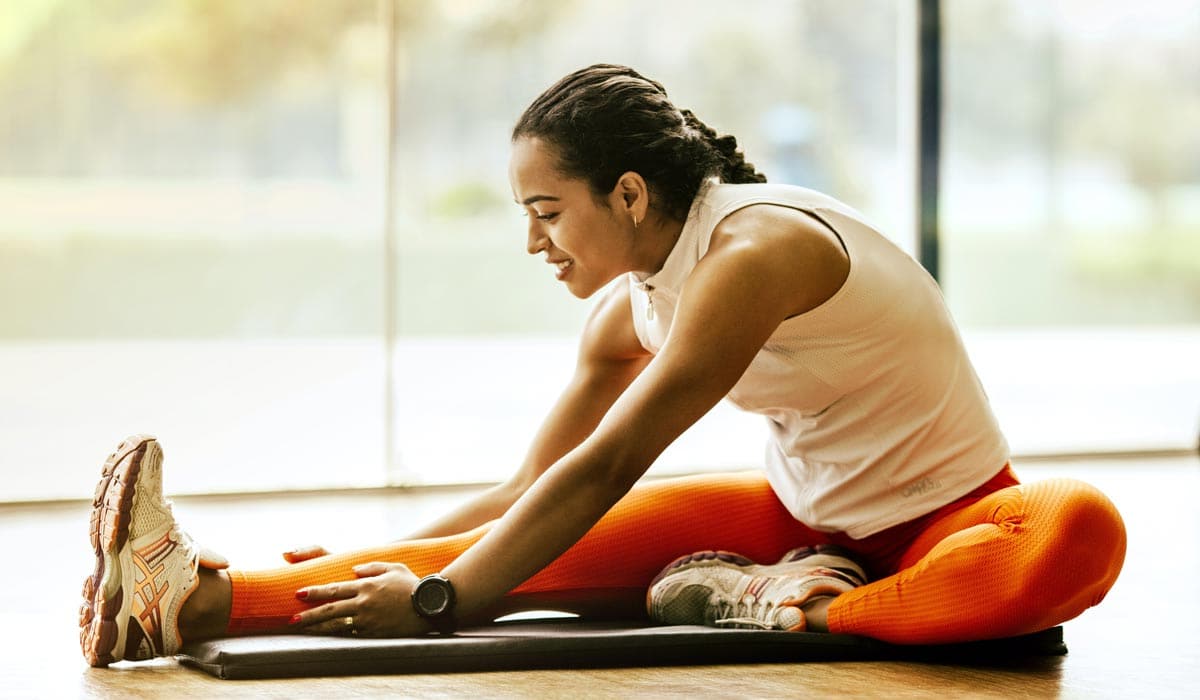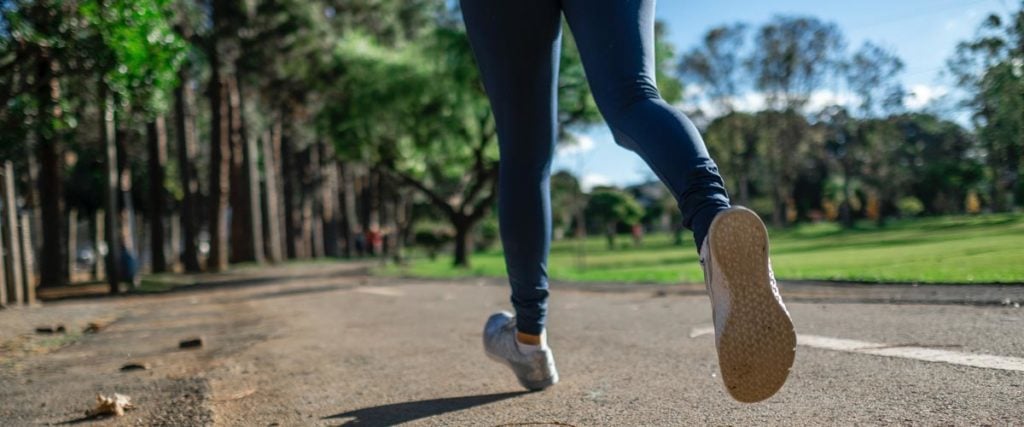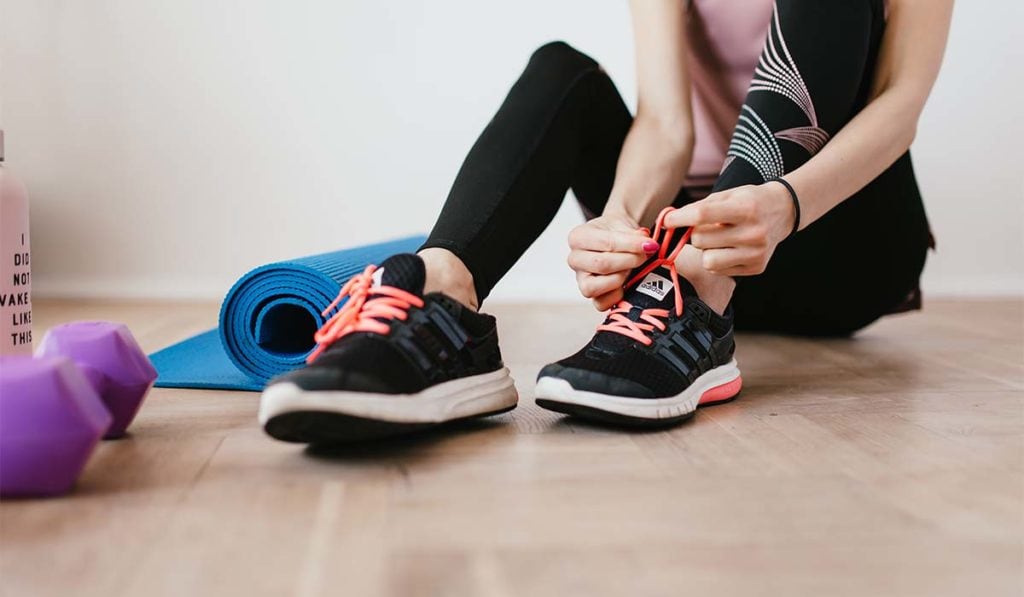
6 Types of Exercises to Relieve Stress
Most likely, in your introduction to fitness, you became aware of the benefits for your body first. For example, if you think back to gym class as a kid, chances are your teacher wasn’t praising fitness for its mental benefits but focusing on its physical ones. And while fitness does have many physical health benefits, more and more researchers are starting to see the benefits of the mind, particularly how exercise can relieve stress.
Learn more about stress in the body and how fitness can help manage stress and relieve stress.
What does stress do to one’s body?

First, let’s take a step back and talk about what’s happening in the body when we are stressed. This is important because many of the ways fitness can benefit stress is by being counteractive to these natural bodily stress responses.
Stress is when any stimulus (could be in our head or due to factors around us) produces a biological response. The biological response may involve different chemicals in the body (hormones, neurotransmitters, etc.) and can influence different parts of the body, stomach, heart, skin, etc.
Stress can result in mental responses, like worry, insomnia, anger, or panic. And body responses like tense muscles, neck or backaches, headaches, stomach aches, rapid breathing, and many others. Everybody’s stress response is a little different.
If the body is left in a state of stress for a prolonged amount of time, it can evolve into disorders or diseases. 1However, one way to manage stress, no matter who you are is through movement and fitness.
How can exercise relieve stress?

Exercise can help manage stress as well as reduce stress over time. Find out the specific ways it does just that below!
Lowers Stress Hormones
You may have heard people talk about the rush or even high of a post-workout. However, what they might be experiencing is a lower level of stress hormones.
Research shows that after a period of sustained movement, people have lower levels of cortisol and epinephrine, two stress hormones. In some ways, you can think of exercise as a type of practice for your body when it does encounter stress. Because the reality is when you are exercising, your body initially responds with stress, but then calms down, and actually lowers stress levels.
Repetitive movement
Although not as explicitly researched, some believe that specific exercises that are repetitive have a meditative effect. Such exercises like biking, running, swimming, and yoga where you repeat an action over and over again, falling into a type of rhythm.
If you can focus just on the task at hand, you may be able to distance yourself from the daily stress and find a kind of meditation in the movement.
There are also exercises that are specifically called meditative movements, focusing on breath and movement.
Quality of life
One way exercise can manage stress is by enhancing your quality of life, in different aspects. You can think of it as a virtuous circle, fitness can improve your quality of life which can help manage stress, and fitness can reduce stress which can improve your quality of life.
Sleep improvement
Sleep is crucial for day-to-day functioning, and poor sleep is often linked to different health disorders.
Studies show that for most adults, exercise can improve sleep outcomes. Specifically in older adults with sleep troubles, and those with insomnia that are inactive, exercise can be one remedy.
Self-esteem
Exercise has also been found to help enhance your self-esteem over time.
The work you put into your fitness routine may bring you greater self-acceptance, self-worth, physical confidence, and more.
Depression/anxiety
Lastly, exercise can help regulate and manage feelings of depression and anxiety. Although this isn’t often used as a sole treatment for depression or anxiety, exercise can be an effective alternative or additional treatment depending on the individual.
6 Types of Exercises to Relieve Stress

1. Cycling
Cycling is a great way to get active and relieve stress at the same time. It’s especially good for people who don’t like running or other high-intensity exercises because it’s gentle on the body but still provides a good workout. And because it’s low-impact, it’s suitable for people of all fitness levels. Additionally, cycling can help improve your cardiovascular health, increase your endurance and strength, and help tone your legs, glutes, and core.
2. Walking
Walking is often said to be the best exercise. And it’s true – walking is a great way to get your heart rate up and release some endorphins, which can help to reduce stress levels. Plus, a 10-minute walk can be enough to clear your head and relieve stress. Walking is also a great way to get some fresh air and boost your energy levels.
3. Running
Running is a great exercise for releasing endorphins and reducing stress levels. In just 30 minutes, you can work off the stress of the day and clear your head. Running is also a great way to get some exercise and fresh air. It’s a low-impact exercise that can be done almost anywhere.
4. Yoga
Yoga is one of the best exercises for reducing stress. The combination of physical and mental stimulation can be very effective in helping to relieve tension and anxiety. The poses require you to focus on your breathing and block out any distractions, while the relaxation pose at the end of each session can help you wind down. Yoga is also a great way to get some exercise and improve your flexibility and strength.
5. Swimming
Swimming is a great exercise for people who are looking for a low-impact workout. It’s also great for relieving stress because it allows you to take deep breaths and relax in the water. Swimming is a full-body workout that helps to tone muscles and improve cardiovascular fitness, and it can be enjoyed by people of all ages and abilities. In addition, swimming is a great way to enjoy the outdoors and meet new people. Whether you’re swimming laps at the local pool or taking a dip in the ocean, swimming is an activity that offer limitless possibilities.
6. Strength Training
Strength training is a great way to exercise and relieve stress at the same time. When you work out, your body releases endorphins, which have been proven to improve mood. In addition, strength training helps to build muscle and reduce fat, leading to a healthier and more toned body. And because it helps to release tension and stress in the body, strength training can also be a great way to improve sleep quality.
Key takeaways:
Fitness is one tool to lower your stress and manage stress over time. Even for those less excited about a fitness routine, simple movements everyday can play the same role. Any sustained movement can help lower your overall stress hormones in your body and help with daily actions such as sleep and mood.
For your overall health (both physical and mental) it’s worth finding an activity that you can keep coming back too!
- Yaribeygi, H., Panahi, Y., Sahraei, H., Johnston, T. P., & Sahebkar, A. (2017). The impact of stress on body function: A review. EXCLI journal, 16, 1057–1072. https://doi.org/10.17179/excli2017-480
- Harvard medical school. (2020). Excercising to relax. Harvard Health Publishing. https://www.health.harvard.edu/staying-healthy/exercising-to-relax
- Hackney A. C. (2006). Stress and the neuroendocrine system: the role of exercise as a stressor and modifier of stress. Expert review of endocrinology & metabolism, 1(6), 783–792. https://doi.org/10.1586/17446651.1.6.783
- Larkey L, Jahnke R, Etnier J, Gonzalez J. Meditative movement as a category of exercise: implications for research. J Phys Act Health. 2009 Mar;6(2):230-8. doi: 10.1123/jpah.6.2.230. PMID: 19420401.
- Kelley GA, Kelley KS. Exercise and sleep: a systematic review of previous meta-analyses. J Evid Based Med. 2017 Feb;10(1):26-36. doi: 10.1111/jebm.12236. PMID: 28276627; PMCID: PMC5527334.
- Moreno Reyes P, Muñoz Gutiérrez C, Pizarro Mena R, Jiménez Torres S. Efectos del ejercicio físico sobre la calidad del sueño, insomnio y somnolencia diurna en personas mayores. Revisión de la literatura [Effects of physical exercise on sleep quality, insomnia, and daytime sleepiness in the elderly. A literature review]. Rev Esp Geriatr Gerontol. 2020 Jan-Feb;55(1):42-49. Spanish. doi: 10.1016/j.regg.2019.07.003. Epub 2019 Oct 12. PMID: 31610889.
- Sonstroem, R. J., & Morgan, W. P. (1989). Exercise and self-esteem: Rationale and model. Medicine & Science in Sports & Exercise, 21(3), 329–337. https://doi.org/10.1249/00005768-198906000-00018
Cooney, G. M., Dwan, K., Greig, C. A., Lawlor, D. A., Rimer, J., Waugh, F. R., & McMurdoG, M. E. Mead (2013).” Exercise for depression.”. Cochrane Database of Systematic Reviews.
Photo Sources:
Photo by Jonathan Borba from Pexels
Photo by Daniel Reche from Pexels








